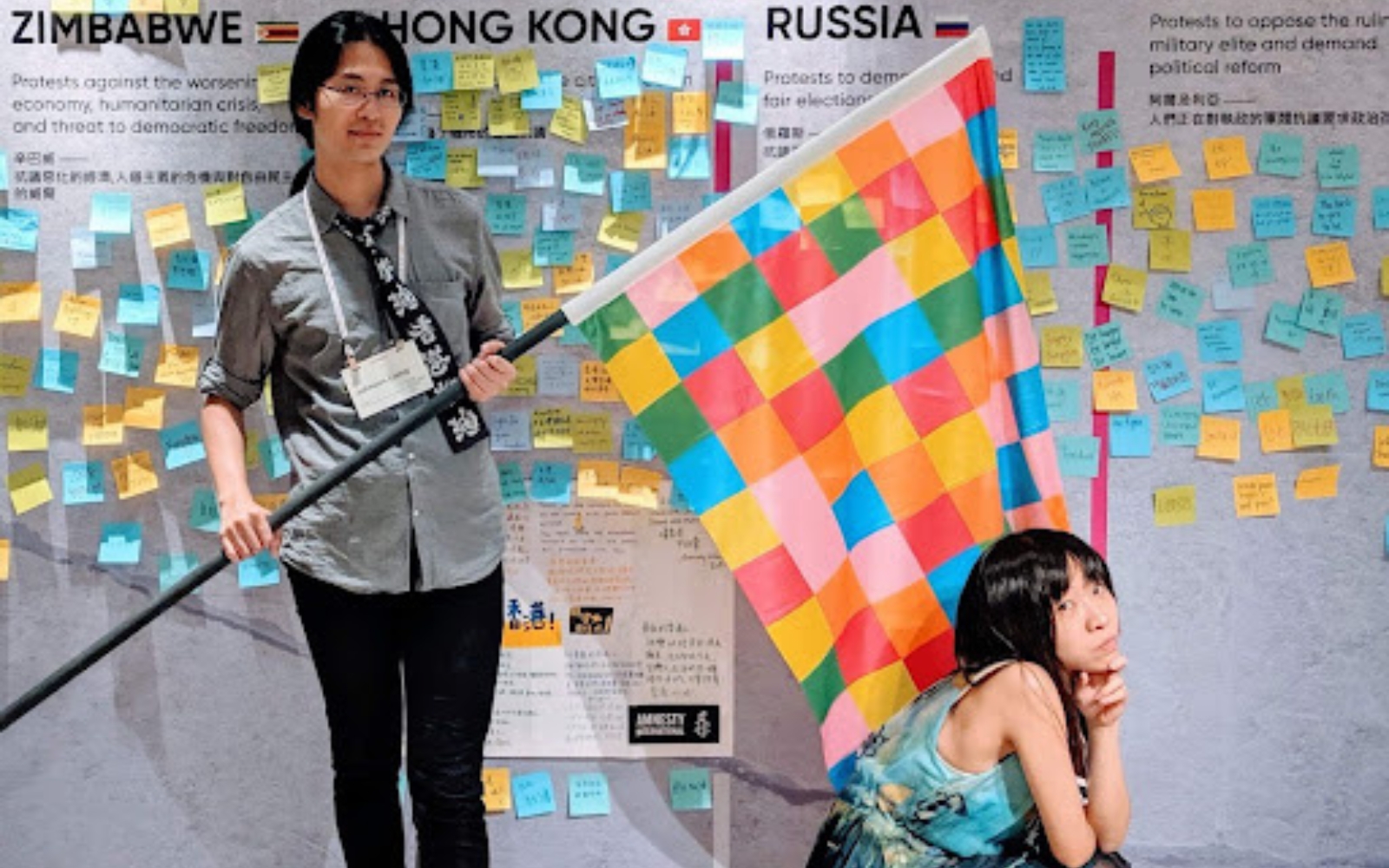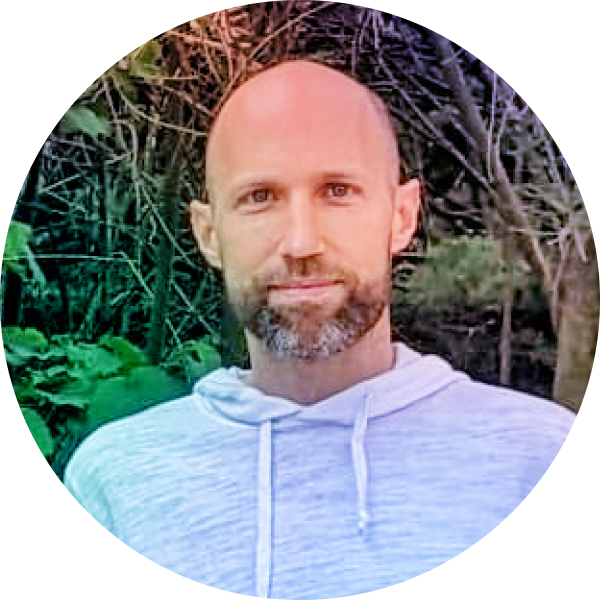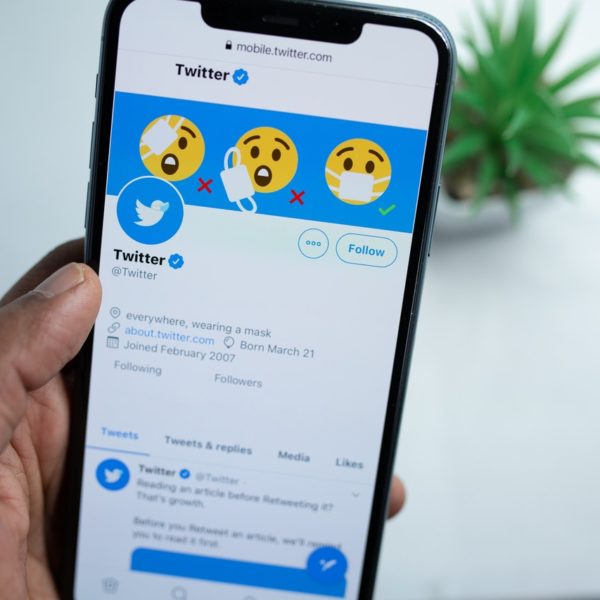Democratizing Fact-Checking with Cofacts
Words by Matt Stempeck • May 30 2023
As part of Matt Stempeck’s work researching the ongoing work within the Code for All Network confronting disinformation, we are sharing the most exciting takeaways from those exchanges in the Civic Tech & Disinformation Project Series.
These interviews were conducted in mid-2022. Please note that the information might change as the organization seems appropriate.
Get to know Cofact’s story and founders!

I got to speak with Cofacts co-founders Johnson (Hsiang-Sheng) Liang and Billion Lee to explore their participatory fact-checking approach. Both are members of Taiwan’s egalitarian g0v civic tech community, and their project reflects its principles well.
When Taiwan’s President Tsai Ing-wen entered office in 2016, Johnson, a front-end developer, began noticing more and more disinformation circulating on messaging apps like LINE, a Japanese app with over 90% market share. At first, when he encountered misinformation, he’d just Google it himself in order to help inform others. Then he realized that other people were probably doing the same thing, each of them working alone. These are the disinfo-fighters Johnson decided to build solutions for. He would build around the habits of the people already taking time to research and debunk misinformation in messaging groups.
Together with Billion, they founded Cofacts to automate the process. “Sharing disinformation is just a button away,” Johnson says. “But fighting it takes a lot of Googling and a lot of clicks.” They wanted to make verification available from within the chat apps themselves.
They started with a LINE chatbot to automate the process, but the first version didn’t work well. The bot simply appended keywords like ‘debunk’ or ‘factcheck’ to users’ queries and then searched the web. The top results it returned were as likely to come from SEO content farms, hardly a reputable source of information.

Open resources
So the team added a crowdsourcing component to the project, combining their LINE chatbot with a civilian fact-checking platform. The beauty of this approach was that everyone can see each other’s work, and either benefit from someone else’s contribution, if it’s satisfactory, or submit an alternative response, if they feel it can be improved upon. The misinformation database contains the original source and is openly available online so that non-LINE users can discover answers to their queries when they search the web.
In a twist from other projects in this research series, the Cofacts website ended up getting ten times more traction than their LINE chatbots. In the month in which we spoke, over 500,000 people found Cofacts via its website, and over 57,000 interacted with its LINE bot (you can verify this claim, as Cofacts has made both its chatbot and website analytics publicly available.) A lot of people were curious about which misinformation messages were circulating the most, but the team didn’t have time to analyze the data so they just made it all open.
Egalitarian mission
True to the g0v spirit, Cofact is a completely open project. This means that rather than set up exclusive partnerships with Taiwan’s traditional fact-checking publications, those groups can freely use Cofacts to check the data on misinformation circulation rates.
If professional factcheckers want to add their work to the replies database, they can come to add it themselves (usually by copying and pasting the text, although Cofacts does have an API).
Cofacts takes the Wikipedia approach where anyone can serve as editor. Civilian factcheckers and professionals are treated equally by Cofacts. This approach may not be popular with professional factcheckers with journalism careers, but for Cofacts it’s a core principle.
“We’re trying to make it so that normal people from different walks of life, both professional factcheckers and doctors, nurses, teachers or authors can act as one community working together,” Billion says. “Sometimes a user will ask, “Why should my 90-year-old grandma trust you?” And in some cases, some Taiwanese people have lost their trust in [the media], so we’re trying to reduce the gap between the general public and reporters.”
To get through to people, Cofacts encourages its fact-checking community to write them debunks in friendly, informal language, “Just like when you talk with friends and family”, Billions says.
Cofacts also build community in person. They host bi-monthly editor meetups, where 20-some participants join to share best practices like differentiating between facts and opinions and crafting good reply arguments.
Language
At the moment, the Cofacts bot operates in Mandarin, English, Thai, Japanese, and Korean. They’d really like to speak more languages, including Spanish, German, and French. They’ve had funding in the past to pay translators, and some translators are volunteers. I shared some localization and translation resources like Localization Lab, Transifex, and Localize JS.
Need for speed
Because the debunks are served up by a chatbot within a messaging app, speed is of the essence. The chatbot must imitate how people chat with other people, which requires a casual tone, and not too long a wait for a reply.
Another way Cofacts produces effective fact-checks is by writing more of them. Their database allows factcheckers to draft multiple variations responding to the same misinformation. The goal is to produce responses to misinformation that feel like a native chat experience with a trusted friend.
“If any volunteer finds the current reply isn’t convincing enough, they can just submit another factcheck reply and put it in a way that is more persuasive,” Johnson says. “They can use more persuasive references, or reply in a way that’s closer to the audience. There’s endless possibility for a volunteer to experiment with their narratives and see which work.”
The key to this system is a feedback loop that asks the recipient of the debunk whether the factcheck was useful, and why or why not. Cofacts collects this useful feedback and displays it in the factcheck database so that every volunteer can see the response and adapt their work accordingly.
A symbiotic platform relationship
Some social platforms financially support fact-checking organizations. Meta and Google, for example, fund the International Fact-Checking Network and similar organizations. Cofacts hasn’t received funding from the big platform companies but has benefitted from in-kind technical features donated by LINE.
In 2017, Cofacts’s chatbot went viral amongst Taiwan’s legislators as a proposed solution to the fake news epidemic of 2016. Someone at LINE noticed the app and invited the team to a meeting.
LINE can’t disclose user data to factcheckers, so the Cofacts approach where users voluntarily report potential misinformation is a convenient solution for LINE. Cofacts developed a special relationship with the company. LINE granted Cofacts a premium account that allows them to conduct many more replies and reports, and help LINE users discover far more factcheck reports.
LINE also gave its users the ability to deploy the Cofacts chatbot within otherwise closed chatrooms, and donated an otherwise expensive paid feature that allows Cofacts to proactively notify users when there’s a response to misinformation that the user has shared with the bot.
The notification system is invaluable, as it can reach pro-actively users directly within LINE. For example, when US House Majority Leader Nancy Pelosi visited Taiwan recently, the trip sparked rumors about her ties to local political parties. Cofacts was able to follow up with users to address these rumors if they’d shared them with the Cofacts bot.
Funding challenges
Like other g0v projects, the Cofacts team is principled in who they will take funding from, with particular attention to funding transparency.
Joining the International Fact-Checking Network would bring in funding, but there are a couple of issues there. Cofacts is building a fact-checking network for the general public to act as factcheckers, rather than reporters. And its reliance on volunteers also differs from funded fact-checking organizations that pay staff journalists. This breaks the International Fact-Checking Network’s usual model. The team is still working to qualify.
As is too often the case in civic tech, the cofounders are worried about the project’s long-term sustainability if they don’t find funding. They’re actively applying for grants to keep it going, and ideally expand the project, while at the same keeping Cofacts cheap enough that it won’t have to shut down for lack of funds.
Open source makes localization easy
Cofacts has also been ported over to the Thai context with Cofact Thailand. “That’s what open source is for,” Billion remarks. Their funder had visited Cofacts in Taiwan, with dinner and talks and sharing of code. Cofacts helped them reach out to a German foundation, which ended up funding the Thai version of the project (but not the original Cofacts, unfortunately). The foundation has a Taipei team now, “But this year they funded some democracy board games rather than disinformation,” Billion says.
Needs
- Funding.
- Fact-checkers: The engineers who build the system are a one-time cost, but it’s the fact-checkers who produce the content that the whole system depends on. Volunteer factcheckers might write a fact-check each day, Billion says, but they can’t keep up with the daily deluge of new misinformation.
The shortage of fact-checkers seems to be an issue even for professional newsrooms – at least one has asked Cofacts if they can forward all the disinformation they receive for the volunteer project to debunk for them!
The role of civic tech in fighting disinformation
Civic tech is an important force in fighting disinformation, Billion says because everyone is equal on their platform. A new user has as much authority as her, the co-founder. Everyone is competing to make their fact-checks the most compelling.
“That is totally different from traditional newsrooms and other fact-checking organizations or companies” that belabor each factcheck before publishing it, she says. That long factcheck production cycle can take anywhere from 3 hours to 3 days, but Cofact is trying to stay only minutes or even seconds behind rapidly spreading disinformation.
Johnson says civic tech serves the field of misinformation management as a practice platform for everyone to practice their fact-checking skills. “There are other media literacy lessons that teach people how to interpret media or factcheck,” he says, but few offer citizens a theater in which to practice and apply the skills they’ve gained. Civic tech provides these platforms for citizens to develop their civic muscles.
“The traditional fact-checker approach leaves the general public with the impression that verifying information is best left to traditional media,” Johnson says. “But with civic tech and a crowdsourced approach, the general public might still look to traditional factcheckers for example, but they might also move much more quickly on viral messages that need a response.”
Civic tech can close that gap and at the same time invite the general public to participate in the fact-checking movement. Developing that public literacy is a process worthy of investment, even before considering the benefits of the fact-checking they conduct.
Interested in learning more?
Matt Stempeck, the National Democratic Institute, and Code for All worked on a research project to understand how civic tech can help confront disinformation. The project’s goal is to learn from (and share out!) lessons learned from organizations that focus on this area. Check out the Disinformation Research Project to learn more and help us spread the word!




